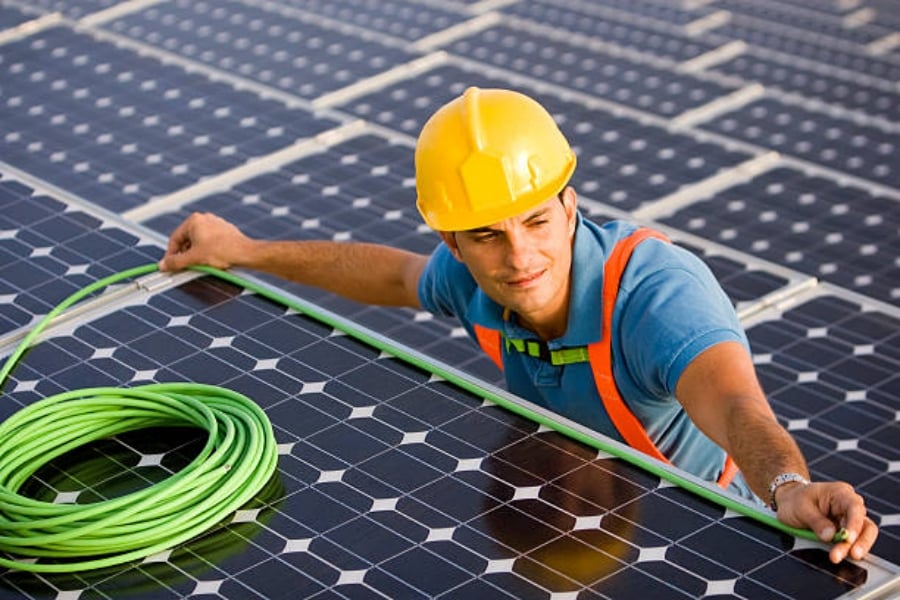10 Prospects of solar controller to battery cable
Solar power has proven to be a reliable and cost-effective way to power off-grid cabin, RV or boat. However, efficient power management is critical to ensure uninterrupted power supply. One of the most important components of your solar power system is the solar controller to battery cable. In this article, we will explore 10 prospects of solar controller to battery cable to help you make informed decisions.
1. What is a Solar Controller to Battery Cable?
A solar charge controller regulates the charge and discharge of your battery by monitoring the incoming voltage from the solar panels, controlling the rate at which the battery charges or discharges and preventing overcharging. The solar controller to battery cable connects the solar charge controller to your battery. It carries the power generated by the solar panels, and transfers it to the battery for safe storage and use.
2. What is the Importance of Solar Controller to Battery Cable?
A solar controller to battery cable plays a critical role in the efficiency, safety and longevity of your solar power system. It acts as a conduit, allowing the power to flow smoothly between the solar panels, solar charge controller and battery. Poor quality or damaged cables can reduce the efficiency of your system, cause power loss, and even cause damage to your battery or other electronic components.
3. What are the Key Components of a Solar Controller to Battery Cable?
A solar controller to battery cable typically consists of three key components: the conductors, connectors and insulation. The conductors are the wires that carry the power from the solar panels to the battery. The connectors are the fittings that connect the conductors to the solar charge controller, battery, or other electronic components. The insulation covers the conductors and connectors, ensuring the safety of the system and preventing accidental contact with live wires.
4. What are the Different Types of Solar Controller to Battery Cables?
There are several types of solar controller to battery cables, including copper, aluminum, and tinned copper. Copper is the most common type of wire used in solar power systems, as it has high conductivity and is corrosion-resistant. Aluminum is less common, but can be used to reduce cost, while tinned copper is more durable and resistant to corrosion than regular copper.
5. How to Choose the Right Size of Solar Controller to Battery Cables?
The size of your solar controller to battery cable determines how much current it can carry, and ultimately, how efficient your solar power system will be. It is important to choose the right size based on the amperage and voltage of your solar panel and battery system. A good rule of thumb is to choose a cable that can handle at least 125% of the maximum system current to minimize power loss and ensure maximum efficiency.
6. What are the Benefits of Using High-Quality Solar Controller to Battery Cables?
Using high-quality solar controller to battery cables can provide several benefits, including higher efficiency, lower resistance, better durability, and improved safety. High-quality cables also reduce the risk of overheating, short-circuits, or other electrical problems that can damage your system or create safety hazards.
7. What are Some Common Issues with Solar Controller to Battery Cables?
Common issues with solar controller to battery cables include corrosion, overheating, power loss, and cable damage. Corrosion can occur over time due to exposure to moisture, salt, or other environmental factors, while overheating can be caused by poor quality or damaged cables. Power loss can occur due to cable resistance or damage, while cable damage can result from UV exposure, bending, or abrasion.
8. How to Maintain Your Solar Controller to Battery Cables?
Maintaining your solar controller to battery cables is important to ensure the longevity and efficiency of your solar power system. Regular inspection and cleaning can help prevent corrosion and damage, while replacing damaged or worn cables can minimize power loss and increase safety.
9. How to Install Your Solar Controller to Battery Cables?
Installing your solar controller to battery cables requires some basic electrical knowledge and tools. It is important to follow the manufacturer's instructions and ensure that all connections are properly tightened and secured. Be sure to use appropriate protective gear and consult with a professional if you are uncertain about any aspect of the installation.
10. Are There Any Alternatives to Solar Controller to Battery Cables?
While solar controller to battery cables are the most commonly used method to connect your solar panels, charge controller and battery, there are alternative methods, including wireless Bluetooth monitoring and control systems, which can provide greater flexibility and ease-of-use for some users. However, these alternatives may add to the cost of your system and may not be suitable for all applications.

